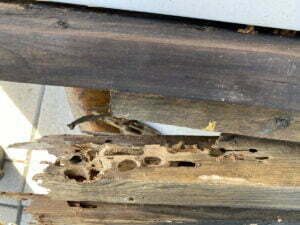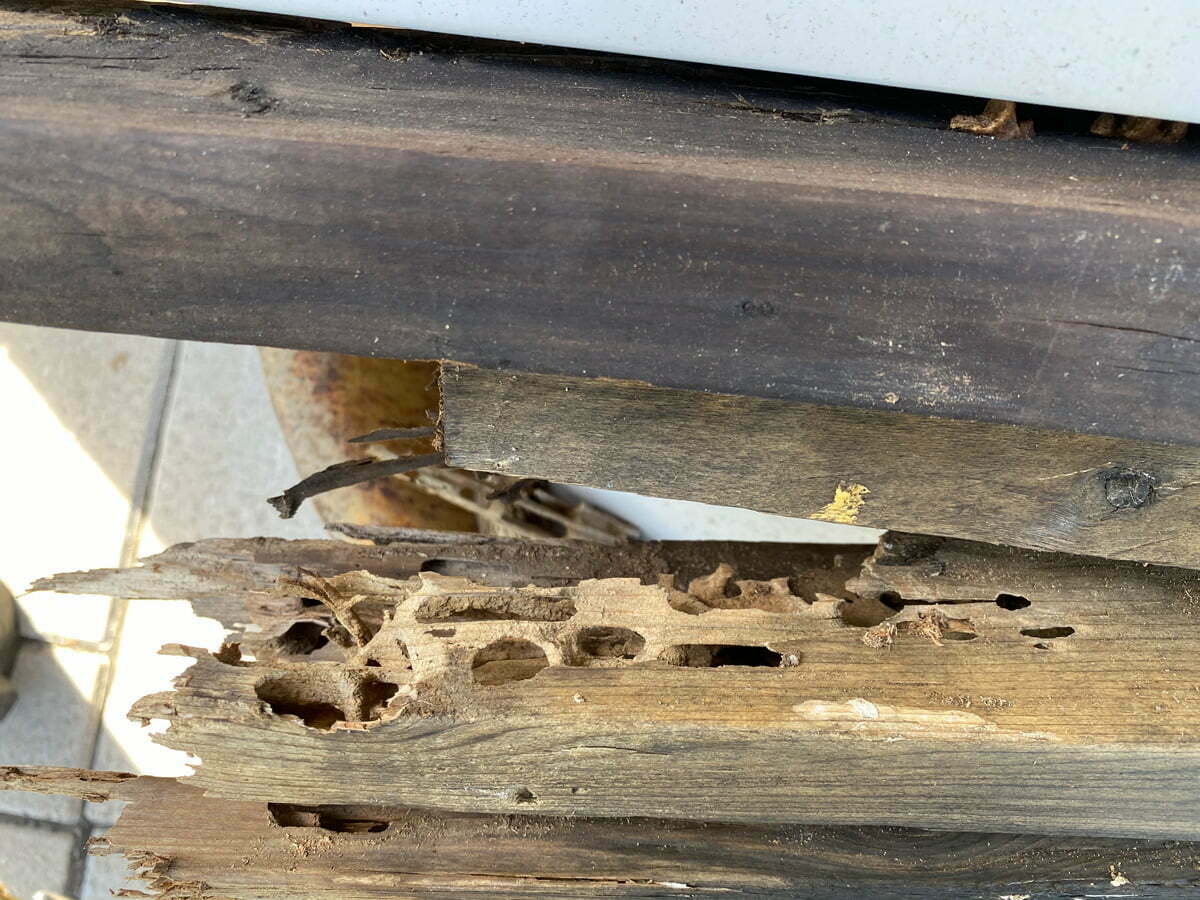Have you seen hefty black ants of different sizes wandering in your house regularly during the winter months? Have you seen winged ants in your house in springtime?
Have you noticed what appear to be small piles of wood shavings near window sills, behind the dishwasher or in other damp areas in your home?
Bad news: there may be a growing nest of carpenter ants somewhere within the structure of your house. Here is some information about the damage they can cause, the work of the carpenter ants exterminator and the importance of rapid action.
Carpenter ants: act quickly to avoid destruction
One thing is certain: just leaving things as they are and hoping for the best will only worsen the problem.
Once the queen carpenter ant has mated, she founds the parent colony. Over time, this colony will house hundreds of sterile female workers, reproductive males and females, and even one or more queens. This parent colony can generate one or several smaller “satellite colonies” inside surrounding structures. Thus, in only two or three years, thousands of ants can invade the structure of a house.
The undeclared presence of carpenter ants at the time the house is sold can be considered as a hidden defect justifying legal action.
It’s important to understand that carpenter ants will have begun their destructive work long before people start to notice them. Most of the time, when the owner observes the increasingly regular presence of these ants indoors, it is because the colony has been established for one, two or even three years. Damage has already taken place.
What damage do carpenter ants cause?
As their name indicates—they love wood, but not as food. They are expert excavators, and wooden structures are their chosen location to dig large networks of galleries.
Indoors, they prefer damp or rotting wood, but they won’t hesitate to dig galleries in the structure or beams of the floor or wooden window frames. Even if your home’s structural timber is healthy, a colony of ants can build its nest within it and invade the empty spaces between walls, attics or hollow doors. Nests have even been found behind rows of books in libraries, behind furniture drawers and polystyrene foam (urethane) insulating materials.
Once carpenter ants have started to excavate a piece of wood, whether it is sound or not, the result is inevitable: the structure becomes brittle and weak to the point of complete ruin if no action is taken.
Examining what caused the infestation is key to preventing further damage
Two aspects come up most often when analyzing this topic: house’s immediate outdoor environment, and the house itself. For example:
- An ant colony lives in an old wooden fence near the home, and the fence is removed. This action forces the colony to move elsewhere.
- The house’s old doors or windows are replaced.
- Heating wood where carpenter ants are already nesting is stored inside the home.
- The house itself is vulnerable: the foundations have cracks or fissures, there are tree branches touching the house, there are surrounding wooden structures in direct contact with the ground (veranda, wooden terrace, shed).
- The house has a humidity or moisture problem, or is damaged by water through the roof or elsewhere, and the damp wood inside the walls begins to rot, offering the ants an ideal spot to establish a satellite colony linked to a nest outdoors.
The important work of the exterminator
Only a professional exterminator who has been certified by the ministère de l’Environnement has the required experience and knowledge to locate a colony of carpenter ants and its satellites within a building’s structure, and to stop the ongoing damage to the property.
This technician is trained and licensed in the use of powerful insecticides in order to fix the problem and protect the occupants’ health. Individuals facing a problem with carpenter ants can be assured it will be eradicated for good.
The pest control expert can also provide a report on the results obtained by the applied treatment. This report can then be included with the inspection report prepared in the context of selling or buying a house. This will undeniably contribute to the buyer’s or seller’s peace of mind.
If you suspect some damage has already occurred, don’t hesitate to call our exterminators in Montreal—they can come to your home at no charge to assess the extent of the infestation.

